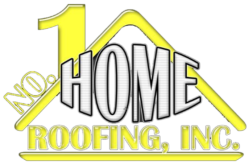Most Commercial or Industrial Buildings and Warehouses have flat roofs. Flat roofs are not entirely flat. They have a very slight roof pitch of between 1/4″ to 1/2″ per foot when compared to roofs on a home or residential building. The slope is to drain water.
Here are three of the most common flat roof materials available for your home or commercial building with definitions and the benefits of using them.
Single layer membrane roof
The traditional hot-tar-and-gravel roof is built from three or more plies of waterproof material alternated with hot tar and ballasted by a layer of smooth river stone. In the past, these roofs were made of tar paper. Now, these types of roofs gradually are using more-advanced materials such as fiberglass membranes.
Single-Ply Membranes sheets can be mechanically fastened, ballasted, or chemically adhered to insulation, creating a layer of protection on your commercial facility. The sheets are made of rubber and other synthetics. This flat roof system contains layers of waterproof membrane consisting of a treated fiberglass basemat tar and gravel to seal the flat roof surface.
The Pros:
- Designed to be installed in one layer
- Great flexibility
- Resistant to UV radiation
- Excellent against acid rain conditions
- Excellent performance under dramatic weather changes
- Wide variety of grades available
- Lightweight product
- Excellent reflective properties
- Easy to install
- Economic feasible
The Cons:
- Thinner surface that can be easily punctuate
- Relatively short lifespan
- Seam problems might arise
- Can be susceptible to water retention problems
Modified bitumen roof
Bitumen roofing or a modified bitumen roof is one of the longer lasting and durable roofing options for flat roofs. Modified bitumen is a type of asphalt product that can be applied in several ways to the roof in both hot and cold temperatures. There are a lot of advantages to using a modified bitumen roof over other types of membrane roofing and are often seen as the modern alternative to the built-up roof.
It has a long, proven track record that can be counted on. These roofs usually have a very long manufacturer’s warranty that can help to guarantee the roof’s longevity and they are rated against wind, fire, and hail, so they are very durable. The material is applied with self-adhesive sheets, hot-mopped asphalt, or cold-applied adhesives. Leaks are stopped by melting together the seams.
The Pros:
- If applied as a Two-Ply MB roofing material, it becomes almost a 1/2″ thick that will last well beyond 40 years
- Ultraviolet protection
- Cannot be damaged by foot traffic
- Easy to install over other surfaces with little preparation
- Can paint with Silver Paint or Aluminum Asphalt Coating for even longer life expectation
- The Seams are Torch or Heat welded – will not separate
- Sturdy and durable.
- Lower cost
- Lower energy bills and carbon footprint
The Cons:
- Possible fire hazard since roofing involved heated installation
- Black color absorbs rather than reflects heat
Built-up roof (BUR)
Built-up roof is another popular material used for low-slope roofs. It is a built-up roofing which is composed of several layers of bitumen surfaces and is finished up with an aggregate layer or coating.
Built-up roofing has been around for over 100 years with improvements along the way. Recent built-up products incorporate a rigid layer of insulation. Ply sheets are the fabrics or layers used on built-up roofing. The ply sheets are commonly reinforced with fiberglass mats or organic mats. Built-up roofing has an average life expectancy of 15 to 30 years and lasts longer in warmer climates like Florida.
The Pros:
- Low maintenance
- Can withstand heavy traffic
- Protection against water, UV rays and weather
- Easy to remove layers
The Cons:
- Can be difficult to find source of a leak
- Shorter roof lifespan than other options
- Fumes and vapors during installation are potentially hazardous
- Susceptible to wind and moisture
- Heavy material
Because flat roofs are particular in design and require quality care in installation and repairs, No. 1 Home Roofing strives to make certain that you’re covered with services, from re-roofing your flat roof to coming out for an emergency.
Roof inspections
If you are having regular roof inspections done by an experienced Roof Company, you will know that your roof is in good shape and will pass a home inspection.
Contact a roofing specialist. Check out your roof condition now to make sure you don’t have any possible problems like loose or missing shingles, etc.
No. 1 Home Roofing is proud to deliver quality service to its clientele in local communities, and therefore has years of experience in re-roofing and patching flat roofing systems.
No. 1 Home Roofing is a family owned and operated roofing company conveniently located on US Highway 19 in Palm Harbor, Florida. We are dedicated to providing top quality workmanship and materials to ensure that your new roof is done right. We specialize in shingle, tile, and flat roof installation, repairs, and maintenance. Contact us for an appointment and/or estimate at 727-781-7663.
